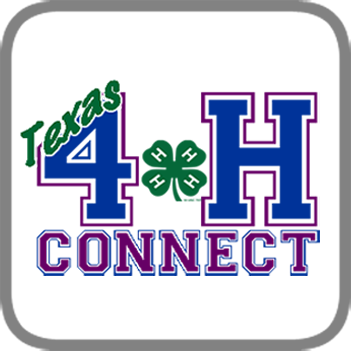2025 Results
Event Information
Deadline: Check with your County Extension Agent. Deadlines vary by county.
County entries will be submitted by a method set by your County Extension Office.
District entries will be submitted through 4-H Online.
All photos will need to be submitted via Summitable,(link to come) after completing 4-H Online registration.
District entries registration dates: March 2, 2026-March 27, 2026
Photos entered at District must qualify at the county level first!
Display Date: Photos will be on display online no later than May 1st.
Purpose:
The Texas 4-H Photography Contest encourages self-expression and allows youth to demonstrate skills learned in the area of photography, including the use of photographic equipment and process of photographs.
Objectives:
- To develop life skills in composition, light, story line, posing, and awareness.
- To gain knowledge about cameras, camera settings, photography dimensions and resolution.
- To encourage 4-H members to use photography as a meaningful communication tool in their lives.
- To provide photography project showcase opportunity for 4-H members.
- To continue to share the message of 4-H.
- To utilize photographs which can promote and strengthen the 4-H program.
2026 D8 Photography Contest Information:
- Rules & Guidelines (includes: Rules, Category Descriptions, Judging Criteria, and Score Sheet) PDF MS WORD
- Description of Categories
- Judging Criteria
- Score Sheet MS WORD
Texas 4-H Photography Contest Website
Categories: (New)
***NEW FOR 2026***
Categories will be broken down per age division as follows: (Descriptions Below-will follow the descriptions provided below)
- Junior Age Division 3 Categorie
- Animals – Domestic/Wildlife
- Plant/Landscape/Nature
- People
- Catch-All
- Intermediate Age Division 6 Categories
- Animals – Domestic/Wildlife
- Plant/Landscape/Nature
- People
- Details/Macro
- Elements of Design
- Catch All
- Dominant Color
- Theme-Volunteers in Action
- Senior Age Division All 18 Categories
| TEXAS 4-H PHOTOGRAPHY CONTEST
2025-2026 CATEGORIES (all descriptions have been revised/simplified) |
||
| CATEGORY | DESCRIPTION | NOT ALLOWED |
| Animals – Domestic | Photos of domesticated animals adapted for human environments. Examples: dogs, cats, horses, pigs, chickens. | Wildlife, all waterfowl, zoo animals, or animals not under human care. |
| Animals – Wildlife | Photos of undomesticated animals in natural or zoo-like environments. Examples: deer, ducks, birds, snakes, whales. | Domesticated animals, livestock, or pets. |
| Catch-All | Photos that do not fit in any other category. | Duplicate entry of a photo already submitted in another category. Photo that belongs in another category. |
| Details & Macro | Close-up photos highlighting fine details or making small objects appear larger than life. Examples: insect eyes, veins on a leaf, water droplets. | Standard close-ups that don’t emphasize fine details; digitally created “macro look” (heavily cropped to simulate a close-up) |
| Dominant Color | Photos where one specific color is the primary visual element. Examples: a bowl of lemons in strong yellow light. | Black & white, sepia, duotone, or multiple equally dominant colors. |
| Elements of Design | Photos emphasizing line, shape, pattern, form, texture, or perspective. Examples: repeating tile patterns, ripples in water showing repeating patterns, a spiral staircase showing perspective, textured bark on a tree, etc. | Digitally created or computer-generated designs (Photoshop, Illustrator, etc.). |
| Enhanced | Photos significantly manipulated or created using editing techniques. Examples: composites, stitched panoramas, artistic filters. | Use of stock, AI-generated, or non-original images. |
| Food | Still-life style photos highlighting food for artistic or commercial effect. Examples: meals, cakes, fruits, table settings. | Alcoholic beverages or photos where food is not the main subject. |
| Landscape & Nature (Non- Animal) | Photos of outdoor scenics and natural settings without animals as the main focus. Examples: gardens, seascapes, cityscapes. | People, man-made structures, or animals as the main subject. |
| Leading Line | Photos using lines to guide the viewer’s eye toward the subject. Example: a river leading to a bridge. | Weak or implied lines that do not clearly guide the eye. |
| Long Exposure | Photos using extended shutter speeds to capture motion effects or low-light scenes. Examples: fireworks, night skies, light trails, waterfalls. | Images with artificial blur or digital effects simulating long exposure. |
| Motion/Action | Photos that capture and freeze movement. Examples: sports, running animals, spinning rides. | Images of objects that are typically stationary or slow-moving. Blurry or poorly focused photos unless intentionally artistic. |
| People | Photos of individuals or groups across all ages and activities. Examples: families, children, portraits, fashion, sports. | Photos without model consent; animals or objects as main subject. |
| Plant/Flora | Photos of a single flower, tree, bush, or plant as the primary subject. Examples: a rose, a tree’s canopy. (Large landscapes with multiple plants belong in Landscape & Nature.) | Large landscapes where a single plant is not the central focus. |
| Reflections | Photos capturing mirrored images in water, glass, metal, or other reflective surfaces. Examples: lakes, puddles, water droplet, building facades. | Images where the reflection is not the primary subject. |
| Shadow/ Silhouette | Photos where a shadow or silhouette is the primary subject against a brighter background. Examples: shadows of people, animals, or structures. | Images where the shadow or silhouette is not the primary subject. |
| Transportation | Photos showcasing vehicles or modes of travel. Examples: bustling urban streets, cars, buses, trains, boats, bicycles, airplanes, and rockets. | Images where transportation is background only, not the subject. |
| Theme – Volunteers in Action (New) | Celebrate the heart of Texas 4-H by capturing volunteers in meaningful moments of service. From mentoring youth and leading workshops to organizing events and supporting communities, showcasing the dedication, passion, and behind-the- scenes efforts of 4-H volunteers who make a difference every day. | Posed portraits without volunteer activity shown; photos where the subject is not a 4-H volunteer. |
Judging Criteria
Each photograph will be evaluated against the following set of criteria. Based on total points awarded for each photograph, the participant will be awarded a blue, red, or white ribbon. The criteria for evaluating the photographs will be:
|
IMPACT (Max Points: 15) |
Impact is the sense one gets upon viewing an image for the first time. Compelling images evoke laughter, sadness, anger, pride, wonder or another intense emotion. There can be impact in any of the judging elements. |
|
CREATIVITY (Max Points: 15) |
Creativity is the original, fresh, and external expression of the imagination of the maker by using the medium to convey an idea, message or thought. |
|
TECHNICAL (Max Points: 20) |
Technical is the quality of the image itself as it is presented for viewing, which includes the following aspects:
● allowable amounts of retouching and adjustments (removal of red eye, cropping, minor straightening) ● sharpness and correct color balance ● lighting, which includes the use and control of light. The use of lighting whether natural or man-made and its proper use to enhance the image. ● Posing and capturing of the image |
| DIFFICULTY
(Max Points: 5) |
Difficulty is the level of challenge in capturing the image. It takes into account factors such as lighting
conditions, subject movement, timing, and setting. Higher scores reflect images where the photographer successfully managed more complex or demanding conditions.
|
|
COMPOSITION (Max Points: 20) |
Composition is important to the design of an image, bringing all of the visual elements together in concert to express the purpose of the image. Proper composition holds the viewer in the image and prompts the viewer to look where the creator intends. Effective composition can be pleasing or disturbing, depending on the intent of the image maker. |
|
SUBJECT MATTER (Max Points: 15) |
Subject Matter should always be appropriate to the story being told (i.e. category the photo is entered into) in an image. Subject matter also includes the center of interest for the photograph or where the maker wants the viewer to stop and they view the image. |
|
STORY TELLING (Max Points: 10) |
Story Telling refers to the image’s ability to evoke imagination. One beautiful thing about art is that each viewer might collect his own message or read her own story in an image. |
Awards
Blue, red, and white ribbons will be awarded to each photograph that is not disqualified.
Champion & Reserve in each category. The photo with the highest point value in each category in each age division will be awarded as the Champion of their respective category. The photo with the second highest point value in each category in each age division will be awarded as the Reserve Champion of their respective category.
Best of Show. Best of Show awards will be given to one photo in each age division. The Champion photo from each category will be considered for the Best of Show award.
Results
You’ll be able to view all the photos online after judging!
2023 D8 Photography Results Flickr Albums (Junior, Intermediate, Senior, Best of Show)
2019 D8 Photography Results – Junior – Intermediate – Senior
2018 D8 Photography Results – Junior – Intermediate – Senior
2017 D8 Photography Results
2016 D8 Photography Results
2015 D8 Photography Results
2013 D8 Photography Results
2012 D8 Photography Results
2011 D8 Photography Results
2010 D8 Photography Results
2009 D8 Photography Results



